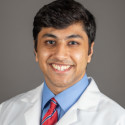In the early 1900s, the wild west of medicine in the U.S. began to undergo significant efforts toward standardization. The 1910 Flexner Report, inspired by the two-year clinical pathway developed by Dr. William Osler at Johns Hopkins, suggested adding two years of basic science education prior to clinical training, resulting in a four-year medical education. As World War I and a growing U.S. demanded physicians, this four-year standard was quickly cemented in medical schools across the country.
It was not until the 1970s that the four-year standard began to be questioned. Faced with physician shortages and ballooning student debt — sound familiar? — about a quarter of U.S. medical schools experimented with shortened curricula, supported by new federal funding. Yet these experiments were short-lived. Students and faculty voiced dissatisfaction with the compressed curriculum. Funding dried up. The GME accreditation process added pressure. And schools did not significantly increase their class size, thus failing to solve the issue of shortages that warranted the accelerated curriculum in the first place.
As a student in my third year of medical school, the question of a three-year versus four-year medical education could not be more salient. As I look to my peers up north, Canadian schools like McMaster and Calgary have awarded MD degrees after three years for decades. In countries such as India, students enter their Bachelor of Medicine, Bachelor of Surgery (MBBS) training directly after high school, shaving four years off their educational path. As we continue to face the same problems that were never really solved in the 1970s, now compounded by a health care system under strain, debate surrounding a three-year medical education has once again blossomed.
Can this time be different? I believe the conversation around three-year versus four-year medical education is too often framed as an either/or proposition. This is a false dichotomy. In the modern era of rapid societal change, where disruptive technologies, fluctuating policy, and compounding knowledge requirements continue to complicate medicine, we ought to develop different pathways for different aspirations. Medical education should strategically expand a three-year option alongside a robust four-year program, recognizing that each serves distinct, yet equally vital, roles in shaping the future physician workforce.
First — is it possible to adequately prepare students to practice medicine in three years? Skeptics may argue that the growing complexity of medicine makes it risky to eliminate an entire year, raising concerns about burnout, maturity, and most importantly, competency. Luckily, a decade into this renewed experiment, a body of evidence is emerging which provides reassurance on this question. A 2024 study of NYU’s accelerated MD pathway found that three-year students performed similarly to traditional four-year students on objective measures. A comprehensive review of Canadian programs echoes these findings, showing no major differences in performance between three-year and four-year graduates in residency. From a student perspective, satisfaction with educational quality remains high in accelerated tracks — equivalent to four-year programs. In fact, a larger proportion of three-year students felt their basic science coursework was clinically relevant and that their schools fostered their personal development. These differences suggest that a well-designed accelerated curriculum can in fact alleviate burnout while maintaining competency. This tracks with personal experience — most medical students I have spoken with argue that the time spent outside of the clinic, in the notoriously lengthy and idiosyncratic basic science classes, contributes most to burnout. A modern three-year program can be efficient and focused, still meeting Liaison Committee on Medical Education guidelines on patient contact hours and instruction.
If the three-year programs are so effective, why have a four-year program at all? The fact is, medicine today has become a sprawling behemoth. Topics such as artificial intelligence, racism, and environmentalism are increasingly demanding space within the medical curriculum. This has led to backlash, and schools have struggled to justify and incorporate these topics into medical education — not because they are not important, but because we have made our expectations of a medical degree too wide. We expect practicing physicians, but we also want physicians who can grapple with and solve the great system-level problems we face today (otherwise we risk leaving these problems in the hands of non-experts with no medical experience). That’s why I envision a new path forward. A two-tiered medical degree, not of quality, but of focus.
One track, the accelerated three-year MD, would be designed for students who are unequivocally committed to the practice of medicine. Their curriculum would be laser-focused on core clinical competencies (with elective time strategically utilized for targeted skill development within their chosen field, rather than broad exploration), high-yield knowledge directly applicable to patient care, and early immersion in their chosen specialty. This program would benefit students who enter medical school with a clear calling, a deep-seated desire to directly serve patients. The students who know what specialty they want to pursue day one. Though such individuals may seem like anomalies, research suggests that an estimated 1/3 of med students maintain stable interest in their specialty from matriculation to graduation (with some variance depending on which specialty). Further, programs like NYU’s accelerated three-year curriculum show it’s possible to have students make decisions about their career early on in training. Ultimately, this three-year model would be one designed for efficiency, for impact, and for rapidly deploying capable physicians where they are most needed.
Conversely, the four-year MD could remain the standard for those seeking a more expansive mastery of medicine, or those whose career aspirations extend beyond direct clinical practice. This is the pathway for future academic physicians, physician-scientists, specialists tackling the most complex medical challenges, and those drawn to non-traditional careers in public health, global health, or medical innovation. At schools like Harvard Medical School, students are encouraged to be a “physician and …”, and many students utilize the expanded elective time to pursue their passions in research and beyond. For me, this aptly named “Pathways” flexibility was one of the main draws of the school. Whether those students pursue practice or industry, research, or public health, this sort of four-year doctoral understanding of medicine can create significant value for society even if time is taken away from direct practice. The fourth year in this model is not superfluous; it’s a crucial period for intellectual incubation, for research endeavors, for pursuing dual degrees, for leadership development, for gaining expertise in niche areas, and for allowing students the time to truly explore the multifaceted landscape of medicine.
But it should not be essential. The crucial point is that neither track should be perceived as inherently superior or inferior. They are simply different, designed to meet different needs and nurture different talents within the medical profession. To encapsulate both types of students and doctors we need those who view medical school as just a stepping stone to residency, and those who view it as a doctorate degree in understanding medicine itself. Such a system would actually expand the number of practicing physicians via a reduced cost barrier for those in the three-year track and increased program seats, while retaining talented students with broad interests within the overall field of medicine. Significant work is needed to implement this new system. I ultimately envision schools nearly doubling their class sizes with support from federal funding, and by gaining the expertise of leaders such as the medical education doctors at NYU and other schools at the forefront of the success of three-year programs.
The challenges facing American health care are multifaceted and immense. But within those challenges lies opportunity. We can overcome the inertia of “doing it like we always have” and re-evaluate the foundations of physician training and what is meant by being a doctor. By embracing a two-tiered system — a robust four-year pathway for mastery and innovation alongside an efficient three-year clinical practice track — we can create a more adaptable, responsive, and ultimately, stronger medical profession, one that serves both the diverse aspirations of future physicians and the urgent needs of a nation yearning for accessible, high-quality health care. We need both focused, expert practicing physicians and physicians with a broad base who can drive innovation and improve health care systems. It’s time to move beyond the rigid dogma of the 1900s four-year standard and embrace a more nuanced, data-driven, and ultimately, more effective approach to shaping the doctors of tomorrow.
If you had the opportunity to do a three-year program, would you take it? Share your reasoning in the comments.
Aditya Jain is a medical student at Harvard Medical School. He also is a researcher at the Broad on the applications of artificial intelligence in medicine. When he's not busy with school, he enjoys playing guitar, reading sci-fi, and hiking. He tweets @adityajain_42. Aditya was a 2023–2024 Doximity Op-Med Fellow, and continues as a 2024–2025 Doximity Op-Med Fellow.
Illustration by Jennifer Bogartz






